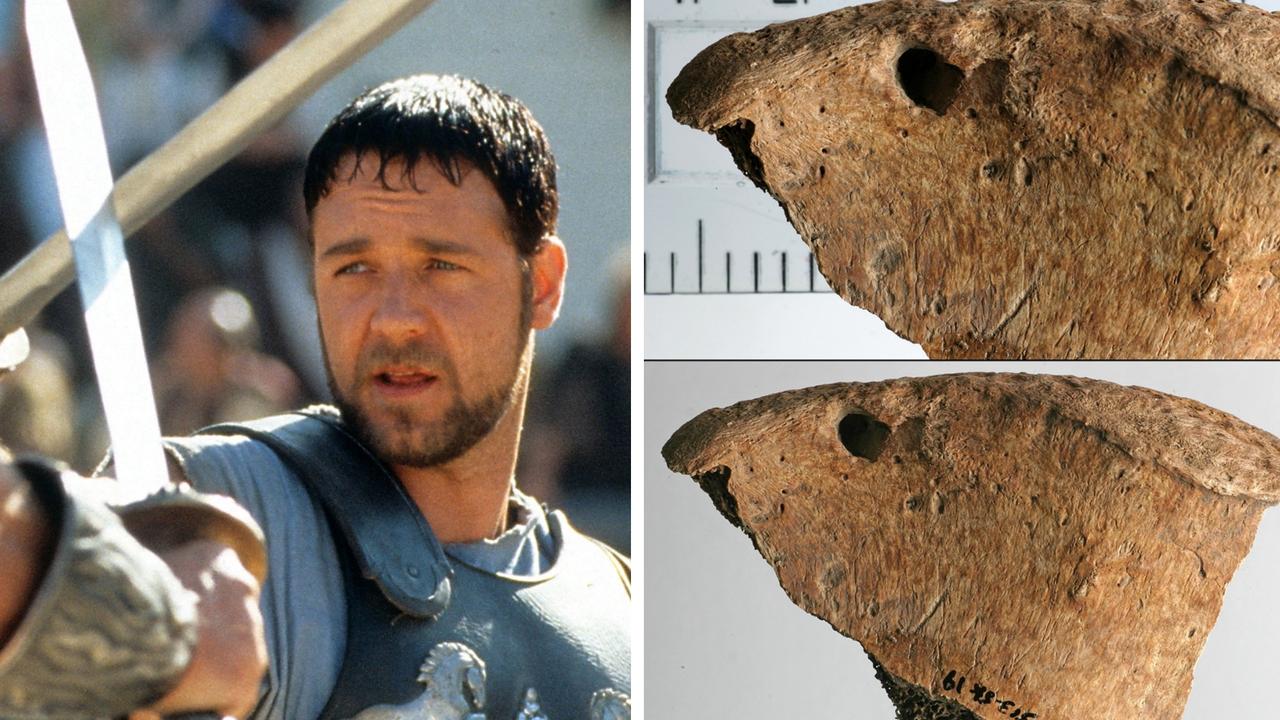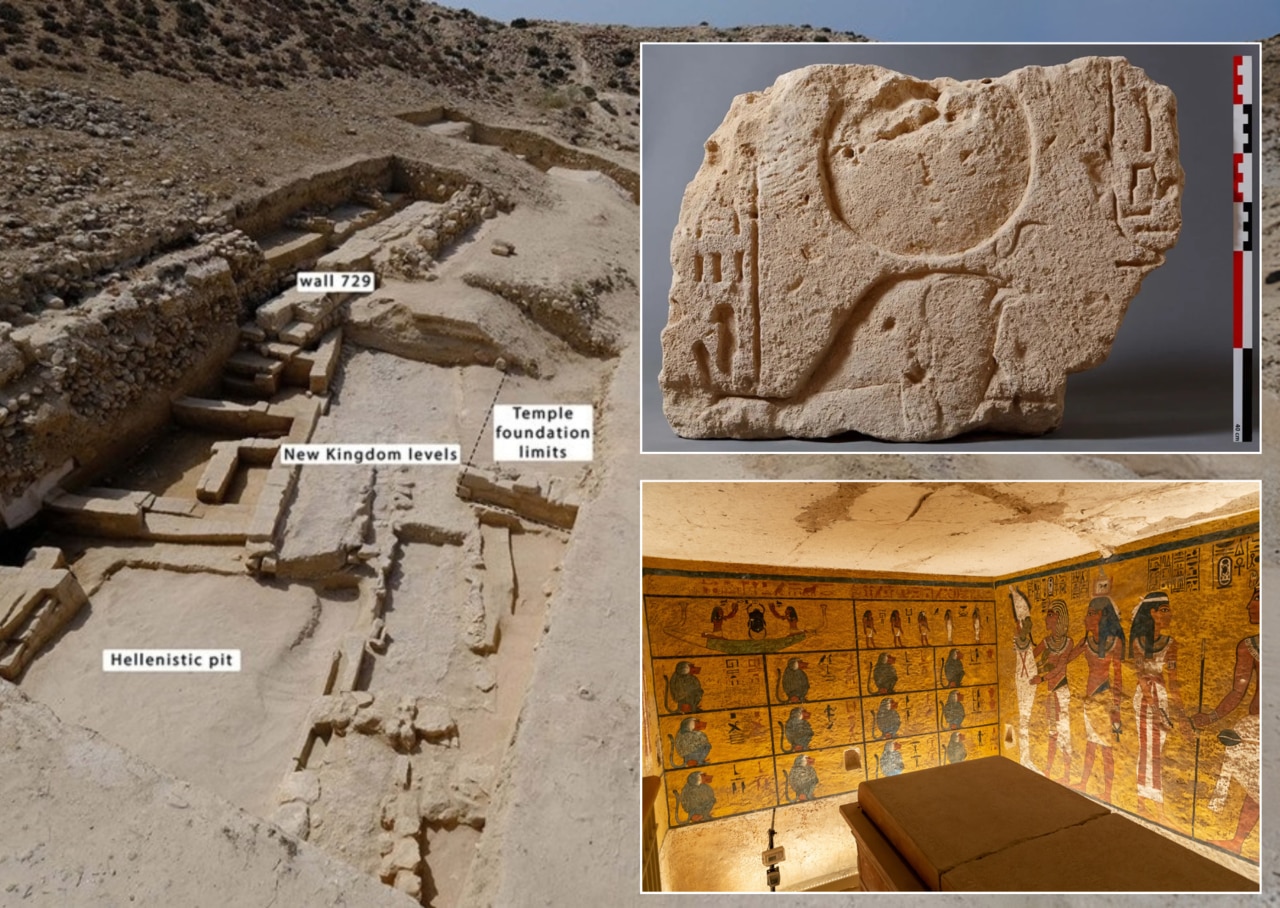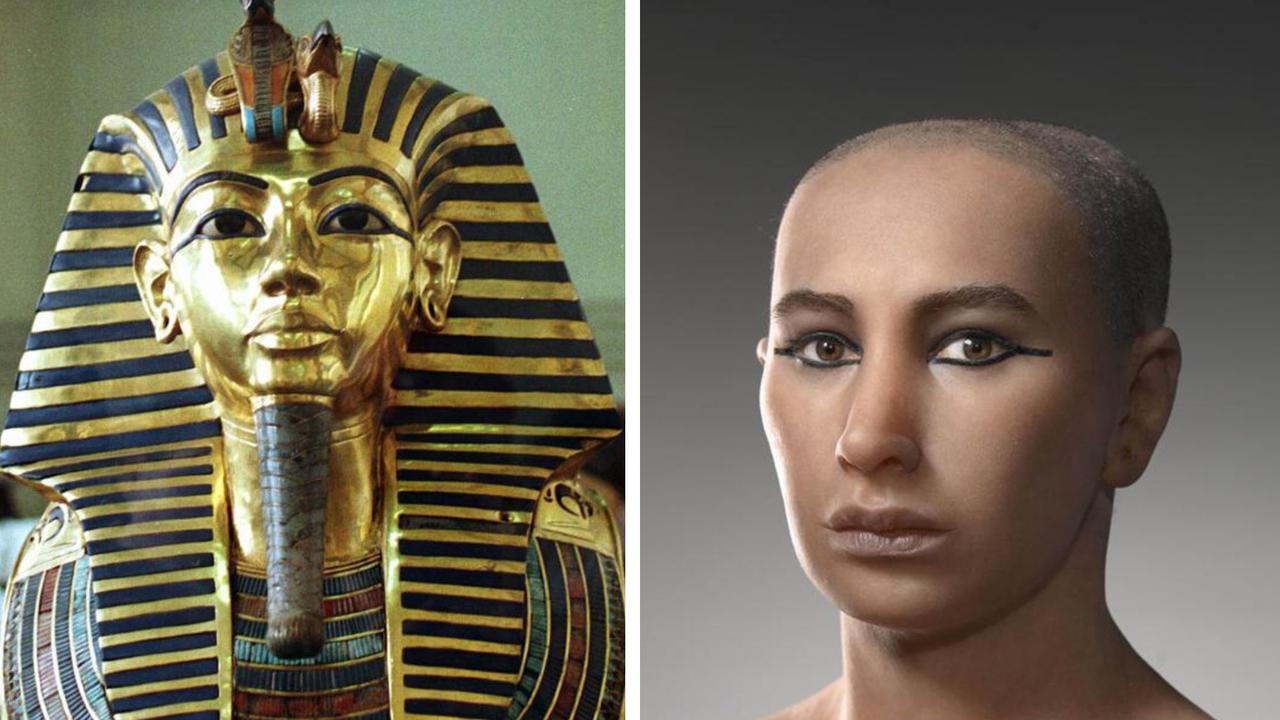Researchers stunned by find in 1200-year-old tomb in China
Archaeologists have unearthed a 1200-year-old tomb on a mountain in China – and were left stunned by what they found inside.
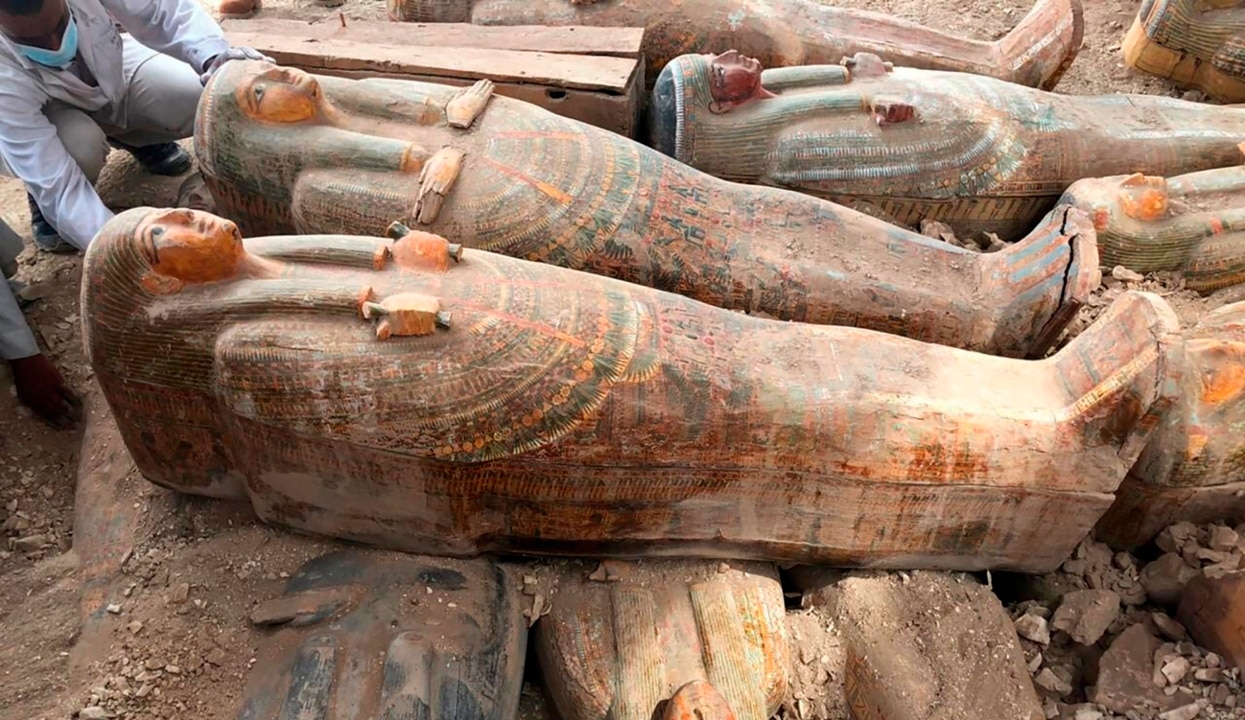
Why would a humble Chinese noodle maker be buried in a tomb fit for an emperor?
And why would a Westerner – complete with blonde hair – be important enough to commemorate on its walls?
Archaeologists in northern China have unearthed a small but richly decorated 1200-year-old tomb on a mountain outside Taiyuan, the capital of China’s northern Shanxi province.
It dates from China’s Tang Dynasty (618-907AD), a period coinciding with the end of Western Europe’s Dark Ages.
And it’s full of surprises.
The Shanxi Provincial Institute of Archaeology first made the discovery during a 2018 road construction survey. But, according to the State-run Xinhua newsagency, they’ve only recently released their findings.
A tombstone epitaph states its owner died at home in the 24th year of Kaiyuan (736AD) at the age of 63.
His wife, Guo, was buried there the same year.
The archaeologists found an exceptionally well-preserved, brightly coloured single-chamber brick structure.
Reds, yellows and oranges cover its whitewashed walls and ceiling. And amid it all stands a stark stone coffin bed on which the couple are believed to have been placed.
But the stark, clear artwork caught the eye of researchers.
It doesn’t tell the expected tale of great battles or successful hunts.
Nor does it place its occupants amid the pomp and pageantry of the imperial court.
Instead, the murals show them hard at work under the watchful eye of magical beasts.
And trading with a Westerner.

The noodle maker
A bold, sweeping botanical design marks the entrance. Three pairs of yellow-robed figures line the doorway and passage.
The pair at the door hold jade tablets, which Xinhua reports reveals them to be “gatekeepers”.
A pair inside the portico appear to be welcoming visitors.
And a pair just inside the tomb itself are guardians armed with swords.
Fantastical beasts (at least one of which is a dragon) weave between thick red banners, dividing the conical ceiling into four equal parts. And 12 regularly-sized red-bordered panels stand beneath.
Many appear to show the same ethnic Han man, based on the consistency of his appearance and clothing.
These may be different stages of the unnamed tomb owner’s life and career. But the Xinhua report says experts also speculate that the stylistic pictures may represent his particular “virtues”.
One shows him holding a ritualistic jade tablet. Another shows him facing a tomb. And another where he’s confronting a snake.

Others show him chopping wood, pointing to a tree while holding a cup, and one scene – without people – of a plant with withered flowers.
One panel, in particular, appears to show both the husband and wife immersed in the process of making rice noodles.
They’re seen doing everything from carting water, threshing grains, using grinding and mill stones, and forming dough balls.
Chinese archaeologists say the strong outlines, simple shading and efficient two-dimensional designs make the tomb’s artwork distinct from other works from the same era.
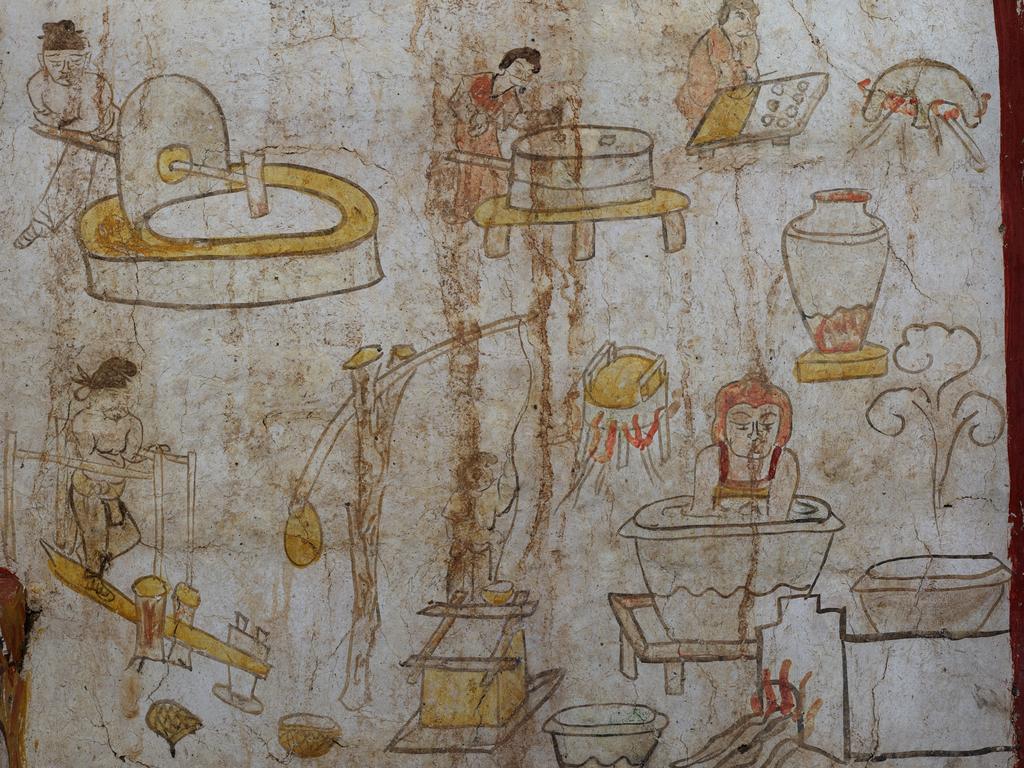
The ‘Westerner’
One of the boldest tomb panels shows a woman dressed in an ornate, multi-coloured gown and holding a chequered box.
Behind her is a yellow-blonde-haired man with a whip leading three saddled horses and a two-humped camel.
The Chinese archaeologists believe this shows contact with distant lands through the Silk Road trading route, which had been in operation for almost 800 years before the tomb was painted.
“Based on his facial features and outfit style, we can identify him as a ‘Westerner,’ likely a Sogdian from Central Asia,” Professor Victor Xiong told LiveScience.
The Sogdian people lived in an area now known as Tajikistan and Uzbekistan, a central hub in the Silk Road network linking Asia and Europe.

Xinhua states camels – while not native to China – were a relatively common feature of artwork of the Tang Dynasty era to highlight the importance of international trade.
Whomever the noodle maker was, he had regal tastes.
The South China Morning Post quotes the director of the Jinyang Ancient City Archaeological Institute, Long Zhen, as saying the unique artistic style was very similar to that found in the tomb of Prince Wang Shenzi (renamed Emperor Taizu of Min – the founder of the Min dynasty during the Ten Kingdoms period – after his death).
Prince Wang rose through the ranks of administrators to become a military governor, chancellor and eventually anointed as a prince.
Legend has it Wang was a frugal man and a fair judge, leading his lands into an era of prosperity.
“Dr Long hypothesised that the same artist may have painted both Wang’s tomb and the newly discovered mural,” the SCMP states.
But Prince Wang died on December 31, 925AD.
That’s 189 years after the noodle maker’s tomb was sealed.
Jamie Seidel is a freelance writer | @JamieSeidel




